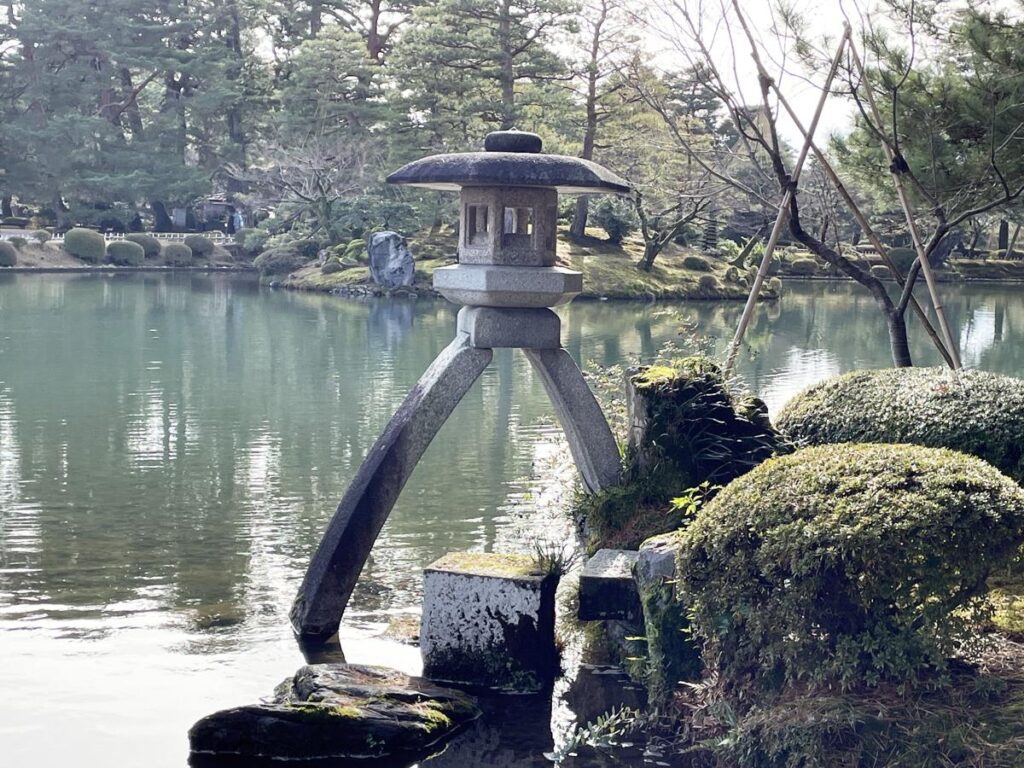Kenrokuen Garden, a strolling-style landscape garden as a special place of scenic beauty
*1: The origin of the garden name: “Six features”
The name “Kenrokuen” means “a garden with six features”. It is derived from an old Chinese gardening book that introduces “Koen”, a garden that possesses six features making it a perfect landscape garden. The features consist of three pairs: “Spaciousness & Seclusion”, “Artifice & Antiquity” and “Water courses & Panoramas”. “Spaciousness” refers to wide spaces and “Seclusion” refers to tranquility and depth. “Artifice” means that human skills are used and “Antiquity” refers to ancient nature. “Water courses” refers to streams, ponds and waterfalls, and “Panoramas” refers to good panoramic views. Actually, it is difficult to find a place where you can enjoy streams and a panoramic view simultaneously.
These paired features are contradictory; however, they are well-harmonized in Kenrokuen Garden. In particular, the coexistence of “Water courses” and “Panoramas” is the most distinctive feature of Kenrokuen Garden, which other gardens cannot imitate.
See here for further information
(Kenrokuen Garden website)


